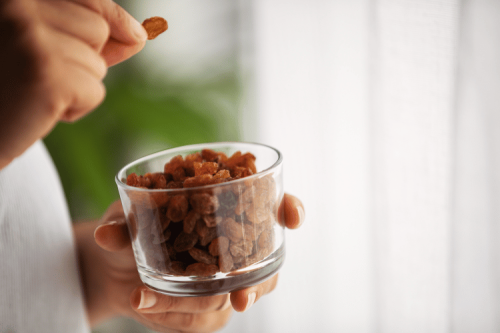![When Can Babies Have Cheerios? [2024 Ultimate Guide]](https://willnice.net/wp-content/uploads/2024/11/when-can-babies-have-cheerios-1220x670.jpg)
Preface
Complementary feeding typically begins at around 6 months old, and the transition to solid foods is filled with excitement and wonder.
Are you wondering when babies can have Cheerios, whether they pose a choking hazard, or how healthy they are? We’ve got you covered! This comprehensive guide covers everything you need to know about introducing Cheerios to your baby. For happy and safe feeding, read on!
When Can Babies Have Cheerios?
Babies can usually start having Cheerios around 9 months of age. However, ensure that the Cheerios or any cereals are plain and honey-free to avoid the risk of infant botulism, as babies under one year should not consume honey.
How to Tell When Your Baby is Ready to Eat Cheerios?
Cheerios are often recommended as a first finger food because they dissolve easily in the mouth, making them a safer option for early solid food eaters. However, they still require certain oral and motor skills. It’s essential to ensure your baby is developmentally ready to handle Cheerios. Check the following signs:
Developmental Signs That Show a Baby is Ready for Cheerios:
- Able to Sit Up Independently: Your baby should be able to sit upright without support, ensuring they can safely swallow.
- Good Head and Neck Control: Stable head and neck control is crucial to prevent choking.
- Pincer Grasp Development: The ability to pick up small objects between thumb and index finger, rather than using the whole hand, is important for self-feeding.
- Shows Interest in Food: If your baby is curious and tries to grab food and bring it to their mouth, it might be a good time to start.
- Can Move Food to the Back of the Mouth: Babies ready for solids like Cheerios can move food from the front of the mouth to the back to swallow.
Note:
If a baby is 9 months old but hasn't yet mastered the pincer grasp or isn't able to sit upright independently, it's advisable to wait before introducing Cheerios or similar O-shaped cereals.
These milestones are crucial for safe eating, as they help prevent choking hazards and ensure the baby can properly manage and swallow small pieces of food.
Can Babies Have Honey Nut Cheerios?
No, babies under 12 months should not eat Honey Nut Cheerios or any products containing honey due to the risk of infant botulism.
Infant botulism is caused by Clostridium botulinum spores that can be present in honey. Infants' digestive systems are not mature enough to destroy these spores, whereas older kids and adults typically can.
Consuming honey can lead to botulinum toxin production in their intestines, potentially causing serious illness. Health organizations like the American Academy of Pediatrics strongly advise against giving honey to infants under one year to prevent this risk.
Therefore, if you're considering giving Cheerios or any cereals to a baby under one year, you should ensure they are plain and do not contain honey or any other added sweeteners. This is crucial for safety and aligns with dietary recommendations to avoid added sugars at such an early age.
Are Cheerios a Choking Hazard for Babies?
No, Cheerios are not typically a choking hazard for babies.
- Size and Texture: Cheerios are small and have a central hole, softening quickly when moistened by saliva. This design and texture reduce the risk of airway obstruction compared to larger, harder solid foods.
- Dissolvability: They easily dissolve in the mouth, which means that even if a baby cannot chew effectively, Cheerios can still dissolve quickly, minimizing the risk of throat blockage.
If your baby gags or spits out Cheerios on their first try, don't worry—it's a normal response as they adjust to the new texture.
Should the Cheerios stick to your baby’s tongue and cause further gagging, stop feeding immediately and gently clear any remaining pieces from their mouth.
If gagging continues, your baby might not yet be ready for dry Cheerios. Consider softening them with breast milk or formula to make them easier to manage. Always monitor your baby closely during feedings and consult the pediatrician if issues persist.
Are Cheerios Healthy for Babies?
Yes, especially the "Original Cheerios" variety. When given in moderation, Original or "Plain" Cheerios can be a healthy snack option for babies.
In-Depth Nutritional Benefits of Cheerios:
Low in Sugar
Plain Cheerios are low in sugar, containing just 1 gram per ¾ cup serving. This makes them a healthier choice compared to many cereals that are high in sugars and artificial flavors.
Promoting Healthy Eating Habits: Early introduction of low-sugar foods like Cheerios can help prevent a preference for overly sweet foods and make it easier to include less sweet, nutritious options like broccoli in children's diets later on.
Stable Energy Levels: Foods low in sugar provide a more stable source of energy without the peaks and crashes associated with high-sugar foods. This can help in maintaining more consistent energy levels in babies, contributing to better overall mood and activity levels.
Whole Grains
Cheerios are primarily made from whole grain oats, which offer several nutritional benefits:
Fiber: Whole grains are a good source of fiber, which helps maintain bowel health and regularity in babies. Fiber also plays a role in keeping them fuller longer, which can help regulate feeding times.
Essential Nutrients: Whole grain oats contain important nutrients including B vitamins such as niacin, thiamine, and riboflavin, crucial for energy production and overall development. They also provide minerals like magnesium and zinc, enhancing bone health and immune function.
Energy: Whole grains are a great source of carbohydrates that provide energy for growing babies.
Additional Fortifications: Some varieties of Cheerios are fortified with other vitamins and minerals to support a growing baby’s nutritional needs. These can include:
- Folate (Vitamin B9): Essential for cell growth and proper development of the nervous system.
- Vitamins C and A: Important for immune function and vision, respectively.
- Calcium: Vital for bone growth and strength.
- Zinc: Supports immune system health and plays a role in cell division and growth.
Iron Fortification
Cheerios are fortified with iron, a vital nutrient for infants, particularly after six months when their initial iron stores begin to deplete.
Iron is essential for cognitive development and helps support brain function, preventing developmental delays. Additionally, adequate iron intake can help prevent anemia later in life.
Lower in Sodium
Plain Cheerios are low in sodium, containing only about 140 mg per serving. Lower sodium levels are beneficial for maintaining healthy blood pressure and promoting heart health.
What Type of Cheerios Is Best for Babies?
For babies, the best type of Cheerios to choose is Plain Cheerios, also known as "Original Cheerios." Here’s why:
- Low in Sugar: Plain Cheerios have very low sugar content, containing only about 1 gram per serving. This makes them a healthier choice compared to other flavored varieties that often contain added sugars.
- No Artificial Flavors: They do not contain artificial flavors or colors, making them a safer and more natural option for babies.
- Iron Fortification: Like many infant cereals, Plain Cheerios are fortified with iron, which is crucial for babies.
- Whole Grains: They are made from whole grain oats, which provide essential nutrients like fiber and vitamins, supporting overall health and digestion.
Varieties to Avoid:
- Flavored Varieties: Varieties such as Honey Nut Cheerios or Chocolate Cheerios should be avoided for babies, especially those under one year, due to their higher sugar content and the inclusion of honey, which should not be given to infants under one year old due to the risk of infant botulism.
Can Babies Eat Cheerios Without Teeth?
Yes, babies can eat Cheerios without teeth. They don't need teeth to chew Cheerios because they soften quickly in saliva, allowing babies to mash them with their gums. This makes Cheerios a suitable option for toothless infants.
The small, ring-shaped Cheerios are easy for babies to handle, and the center hole reduces the risk of choking.
FAQs
When Can Kids Eat Honey Nut Cheerios?
Kids can have Honey Nut Cheerios after they turn one, as it’s safe to introduce honey into their diet at that age.
Conclusion
In conclusion, babies can start eating Cheerios around 9 months old, once they have developed skills like sitting upright and the pincer grasp needed for picking up small objects.
Plain Cheerios are recommended due to low sugar and iron fortification. Always monitor your baby closely during feeding and consult with a pediatrician to address any dietary concerns and ensure a safe introduction to solids.








 Login with Google
Login with Google Login with Facebook
Login with Facebook